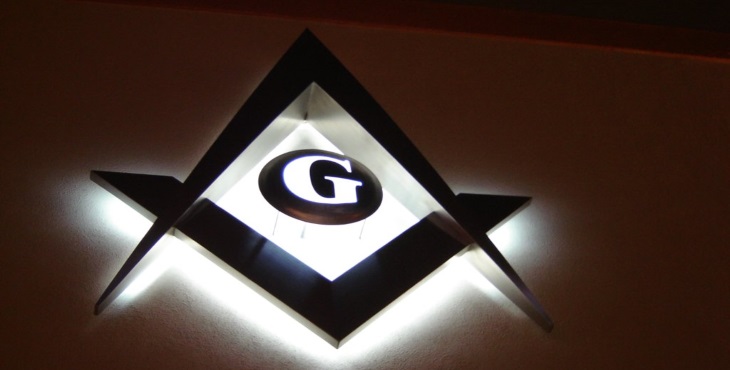CURIOSITIES: The first-known use of the word Freemasons – in the form Free Masons – occurs in City of London Letter-book H of 9 August 1376, though the word is in fact deleted in favour of Mason.
Masons and Freemasons were interchangeable during the 15th and 16th centuries and Freemasons were generally meant to denote hewers or setters of freestone, Masons being used to embrace all stoneworkers. Ashmole in his diary wrote that he was made a Free Mason and referred in 1686 to the «Fellowship of Free Masons«. James Anderson when writing his 1723 Constitutions did not use the single word – Freemasons – once. Whatever the reasons, the 1723 Constitutions contain approximately 126 references to Masons, 12 to Free Masons, 10 to Free and Accepted Masons, 9 to Free-Masons, one to Accepted Free Masons and none to Freemasons.
And such is the tenacity of tradition that to this day the most of the Constitutions are addressed to Free and Accepted Masons and not to Accepted Freemasons. The earliest-known anti-masonic leaflet, of 1698, warns the public against «those called Free Masons» – almost certainly what we now know as speculative Freemasons.
OTHER THEORIES
The term originally derives from the longer and more complete term “freestone mason.” The earliest example of this appeared in Latin in the year 1212, and was “sculptores lapidum liberorum,” meaning “sculptors of free stone.” This was at a time when numbers of stonemasons had been imported into England from France. and during the construction of London Bridge. Westminster Abbey was begun shortly thereafter. Freestone is a type of soft quarry stone, typically sandstone or limestone, which can easily be sculpted and shaped. The terms “maszun” and “masoune” first appeared about the year 1300.
The 1350 English Statute of Laborers referred to a “mestre mason de franche pere,” in Norman French. This was a “master mason of free stone.” In 1391, at Oxford, the Latin term “magister lathomus liberarum petrarum” referred to a “master mason of free stone.” In 1396, the contractors at Westminster Hall were called “lathomos vocatos ffre maçeons,” or “masons called free masons.” This appears to be the first reference to the term “ffre maçeons,” or “free masons.”
The French word for mason was “maçon.”
Also, in France, stonemasons that worked on churches and church properties were free from taxation and government regulation from local magistrates and from the nobility. They had a “franchise” from the church to work on church properties. The word “franchise” derives from the French word “franc,” meaning “free.” They were then called “franc-maçons.” So, there appears to have been two sources for the later term “freemason.”
In England, the term “free mason” or “freemason” became common between 1526 and 1550.
Freemasons were more skilled workmen than the less skilled “rough masons” or “row masons.” Skilled freemasons were paid more, and were capable of carving the elaborate decorative elements (tracery, fan-vaulting and statuary) found in cathedrals and abbey churches. These more skilled freemasons were the architects who also supervised the construction of buildings, many becoming contractors who hired the less skilled rough masons, row masons, stone setters and layers.
During the 1500s, after the beginning of the Reformations and the Dissolution of the Monasteries, freemasons began accepting educated non-masons into their craft. These “accepted masons” were able to bring additional expertise in engineering and architecture into the craft. They were also interested in preserving and maintaining the esoteric and geometric secrets of the craft that were discouraged by the Protestant Reformers. By the early 1600s, if not before, this practice became widespread throughout England. By the mid-1600s, English freemasons (both operative and non-operative), who were accepted into the esoteric part of the craft; were known as the Society of Freemasons. Most of the less skilled operative masons in England were not a part of this Society.
See: 1.) “Free-mason; Freemason” in Coil’s Masonic Encyclopedia. Masonic Curiosities ; 2.) Les Origins de la Franc-Maçonnerie. Masonic Curiosities: Le sacré et le métier, by Paul Naudon (1991); and 3.) Records of the Hole Crafte and Fellowship of Masons, by Edward Conder, Jr. (1894). Masonic Curiosities.
You may be interested in these posts…
(Vídeo) Bienal del Supreme Council of The Scottish Rite, S.J. of U.S.A.
Fraternalism in America (1860 – 1920)





Deja una respuesta